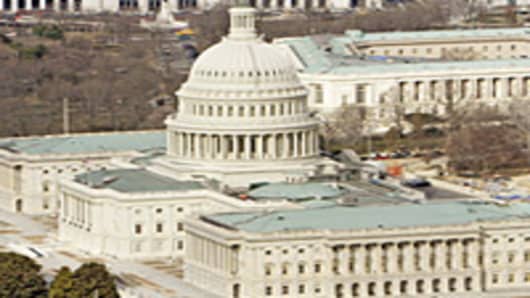The conference has ended, the bill has been craftedand all that now awaits the passage of financial regulatory reform is a vote in both houses of Congress, a signature from the President and months and months of study from regulators as they decide what Congress actually intended.
There has been much attention paid today to the language in the bill as it applies to the market making function of trading and to the parts of a banks’ derivatives business that must be segregated in a separately capitalized subsidiary.
While there seems to be some consternation amongst banks such as Goldman Sachs and JP MorganChase at these provisions, the real world implications are far more difficult to determine.
Once the bill is signed, months of study by regulators will begin and it will be their guidelines on the hard-to-interpret rules related to things like market-making that determine the true impact of what Congress has wrought. And of course it will be years before some of the rules are actually implemented, giving creative bankers plenty of time to figure out ways to restore lost profitability.
On the subject of profitability, I continue to believe the key variable in all of this new regulation will be the cost for banks of setting aside ample capital for their various business pursuits.
Clearly, financial regulation will take some profitability out of certain activities by making those activities more expensive from a capital charge point of view.
And finally, while there’s been much focus on our historic rewrite of the laws governing our financial institutions, there is an equally important effort underway in Europe known as Basel III—a proposal to which will take aim the same issues of capital adequacy and may prove more of a hindrance to banks ability to get a strong return on equity than any regulatory reform instituted here in the U.S.
Basel III is based upon recommendations on banking laws and regulations issued by the international Basel Committee on Banking Supervision (BCBS).
In 1988 the first accord, Basel I, recommended regulations for banks to lower credit risk.
In 1997 the second accord, Basel II, created a comprehensive framework on how much capital financial institutions needed to set aside to cover risk.
According to the banking industry, Basil III will be force banks to raise $700 billion of common equity by 2015 and maintain a core capitalratio of at least 6 percent.
"The Strategy Session," hosted by David Faber and Gary Kaminsky, airs weekdays at Noon ET on CNBC.



